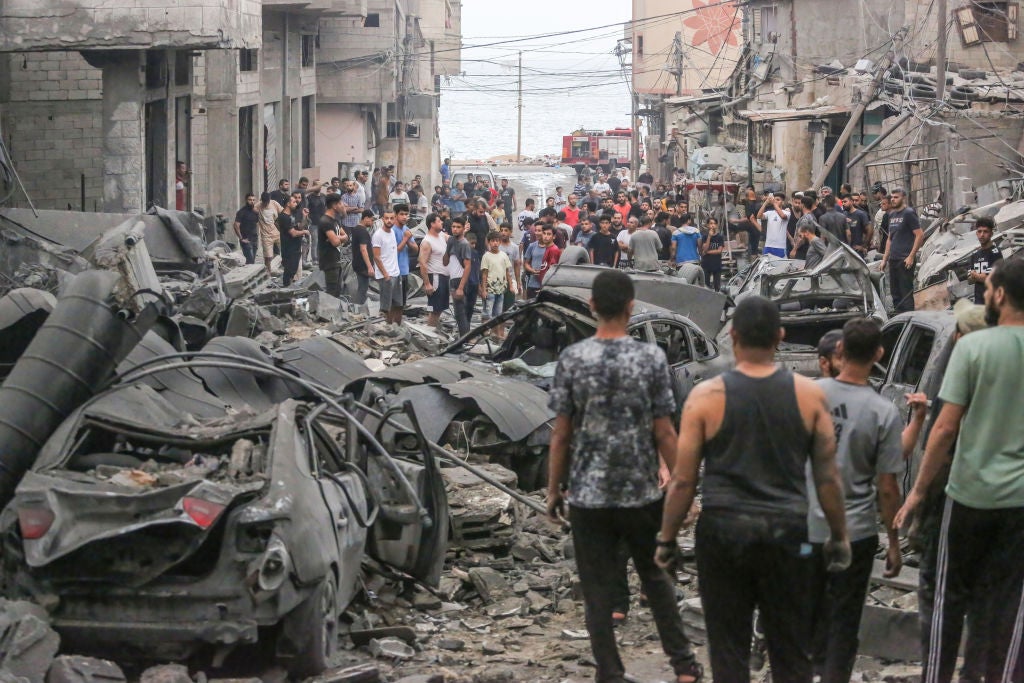
General (ret.) Giora Eiland, a former head of Israel’s national security council outlined two approaches for Israel in prosecuting the war with Hamas, proposing the evacuation of Palestinians to Egypt as a humanitarian alternative to a ground incursion, or else Israel can face a long and dangerous occupation of Gaza.
Eiland, who served as the head of Israel’s National Security Council from 2004-2006, and had also run the Israeli Defence Forces’ (IDF) Planning Branch, and Operations Branch, said in a briefing to journalists on 12 October that he had recommended to government officials for Israel to pursue a strategy of siege against Gaza that provided Palestinians with the opportunity to flee to Egypt before destroying all water facilities in the Gaza Strip.
Eiland recommends “a dramatic and continuous and strict siege over Gaza” cutting the supply of food energy, water, and diesel to Gaza, that would also prevent others from providing assistance to the people of the country. Any residents of the Gaza strip that remained following the call to evacuate would be engaged with as though they were affiliated with Hamas.
Such siege plans are questionable in terms of their correspondence to international humanitarian law and the laws of war, and Eiland notes that such a strategy is extraordinary.
“The decision of the government is actually the only possible decision, and this is to create a situation where Hamas does not exist…This is such an ambitious and far reaching goal, that to achieve it, we might need to take some measures that we never took in the past. So if we want to achieve such a goal, it means that we have to do something drastic, that again has never been done before.“
300,000 IDF reservists have been mobilised to the Gaza Strip, an IDF spokesperson told CNN on Wednesday, amassing a force comparable in size to the entire reservist element of the US military. In light of this, Eiland expressed his concern that the Israeli government may yet still engage in a ground incursion. “I’m afraid that the Israeli government still speaks in all terms, and still believe that the ground operation can solve this problem.”
Faults in a ground incursion in Gaza
Aside from the humanitarian cost to the people of Gaza from a ground incursion by IDF forces, valid concerns remain about the efficacy of such a deployment. Estimates of the total length of the tunnel network in Gaza run to hundreds of miles, and tunnels may be used shelter tens of thousands of Hamas fighters. Any operation to clear such a network would be costly in terms of the lives of IDF soldiers, with an occupation lasting ‘weeks and months’, according to Eiland.
Furthermore, the commitment of resources to Gaza leaves Israel vulnerable to simultaneous attack from Hezbollah in Lebanon, presenting a considerably larger problem than that already confronted in Gaza.
While a siege strategy may appeal to a significant body of Israelis looking for an alternative to a ground incursion, its humanitarian bona fides rest on the assumption that two million Palestinians living in Gaza will voluntarily become permanent refugees in Egypt, a country that is unwilling to receive them, while Gaza becomes the subject of a bombing campaign designed to eradicate all remaining residents and destroy the necessary infrastructure for their return.
“I don’t see any other way. Because if they stay, they will starve. I mean, Israel will not allow any kind of any economic assistance to enter Gaza. So the people, they have only two choices, either to stay and to starve, or to leave. Now of course, Israel will let them go one way.”




